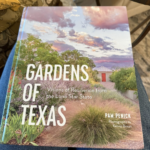Knowing how to use and conjugate ser in all its forms will allow you…
Japan is known for its traditional culture, but did you know that extends even to Japanese festivals? The floats that dominate some of Japan’s most famous celebrations have made it onto UNESCO’s Representative List of the Intangible Cultural Heritage of Humanity. Add one or more of these Japanese festivals to your travel itinerary to understand the appeal firsthand!
Whether you attend the celebrations held for Japanese holidays or watch a parade dancing down the street for a festival, understanding Japanese will enhance your experience. If you’re not sure how to learn Japanese or where to start, Rosetta Stone can show you the way.
Table of Contents
What is a matsuri?
Matsuri (まつり, 祭, or 祭り) is the Japanese word for “festival.” You’ll see Japanese festivals at Shinto shrines (jinja, 神社) and Buddhist temples (otera, お寺) or decorating the streets with music, floats, dancing, and more. No matter which festival (or festivals!) you attend, keep a few things in mind:
- Avoid bringing luggage or large bags, as Japanese festivals are often crowded.
- Have cash, as many stalls for food, games, and omiyage (regional souvenirs) won’t accept debit/credit cards.
- Be mindful of etiquette when attending a festival at a shrine or temple, as they are still religious sites.
- Stay hydrated, especially during the summer when the weather is hot and humid.
- If you get a snack, stop to eat it rather than eating and walking, which is considered rude.
You can find Matsuri all over the country at any time of year, so this could be your chance to explore some regions you may never have considered! Japan has 47 prefectures, each with its own unique history, culture, and—in some cases—Japanese dialects.
Winter festivals in Japan
The calendar year begins with the most important Japanese holiday: the Japanese New Year. You can find matsuri surrounding all of the major holidays (such as Setsubun in February), but be sure to enjoy the Japanese festivals between the holidays, too.
1. Nagasaki Lantern Festival (長崎ランタンフェスティバル)
When: First 15 days of the Lunar New Year (late January or early February)
Where: Shinchi Chinatown and Minato Park in Nagasaki, Nagasaki Prefecture
What to expect: This Japanese lantern festival is a vibrant display of both Japanese and Chinese culture in honor of the Lunar New Year. More than 15,000 lanterns light up the city, some small and others making up full art displays. In addition to the colorful Chinese-style lanterns, you’ll see dragon dances, lion dances, and other performances held throughout the city.
What to eat: Try some chūka ryōri (中華料理, Chinese-style cuisine) like xiaolongbao (小籠包, steamed dumplings filled with minced meat and soup).
Don’t miss: Although the main festivities are centered around Shinchi Chinatown and Minato Park, the entire city of Nagasaki lights up for this festival—explore to your heart’s content!
2. Sapporo Snow Festival (さっぽろ雪まつり)
When: Annually on February 4-11
Where: Ōdori Park in Sapporo, Sapporo Prefecture
What to expect: It’s a winter wonderland! Visitors to the Sapporo Snow Festival in Japan can bundle up and brave the cold to see between 300-400 elaborate ice and snow sculptures. The festival’s official website provides details about the specific activities at each location, but you can expect things like slides made of snow, snow mazes, musical performances on stages made of snow, food vendors, and nighttime displays.
What to eat: Regional specialties to keep you warm like ramen (ラーメン) noodles, grilled beef and seafood, and mulled wine.
Don’t miss: Check out the International Snow Sculpture Contest, where teams from around the world come to Sapporo to build their sculptures in a display of camaraderie between global neighbors.
3. Yokote Snow Festival (横手の雪まつり)
When: Annually on February 15-16
Where: Near city hall in Yokote, Akita Prefecture
What to expect: Kamakura (鎌倉, rounded, hollowed-out snow structures) dot the winter landscape at this festival. Miniature versions of kamakura are illuminated by candlelight, with the warm glow illuminating paths, creating a magical and beautiful scene.
What to eat: Enjoy amazake (甘酒, sweet rice wine) and grilled mochi (餅, rice cakes) while sitting in a kamakura.
Don’t miss: Make sure you stay for the second day of the festival, when ornately decorated staves (bonden, ぼんでん) are carried to Asahiokayama Shrine to pray for a bountiful harvest, prosperous business, and safety.
4. Shuni-e (修二会)
When: Annually on March 1-14
Where: Todai-ji Temple in Nara, Nara Prefecture
What to expect: Shuni-e begins with night after night of purifying fire ceremonies and culminates with a sacred water ceremony on the final day. Also known as the Omizutori Festival (お水取り, literally “water drawing”), the water used can supposedly cure any ailment. Each night, young monks wave enormous torches, drawing circles in the air and casting sparks and ash. The previous year’s sins are purged with the cleansing fire, and it is said that to have sparks and ash fall upon you wards off and protects from evil spirits.
What to eat: After the sacred water has been offered to the Buddhist deities at the temple, festival guests have a chance to try some as well.
Don’t miss: Nara is home to over a thousand deer (shika, 鹿) that love the tourists who bring them crackers (senbei, 煎餅). You can find stalls selling packs of senbei all along the main path in Nara Park (also known as Deer Park) on your way to Todai-ji Temple.
Spring festivals in Japan
Spring is practically synonymous with cherry blossom season in Japan, with peak bloom occurring in late April to early May. While Golden Week in Japan—a week with four national holidays in quick succession—springs to mind for the season, attending Japanese festivals is a great way to enjoy the weather before summer arrives.
5. Hirosaki Cherry Blossom Festival (弘前さくらまつり)
When: Annually in late April to early May
Where: Hirosaki Park in Hirosaki, Aomori Prefecture
What to expect: If you want to see a cherry blossom festival in Japan, you can’t do better than the 2,600 sakura (桜, cherry blossom) trees in Hirosaki park. By using the same techniques used to prune Aomori’s famous apple trees, Hirosaki Park’s trees flower with more buds than a typical sakura tree. Once the sun goes down, the trees are lit up to create a spectacular, soft pink sight.
What to eat: Pick up some easy-to-carry lunch items like onigiri (おにぎり, rice balls) and kara-age (唐揚げ, fried chicken) to enjoy a picnic beneath the falling blossoms.
Don’t miss: Check Japan’s annual cherry blossom forecast before you visit! From there, you can see when peak bloom is expected across the country.
6. Aoi Matsuri (葵祭)
When: Annually on May 15
Where: From the Kyoto Imperial Palace to Kamigamo Shrine in Kyoto, Kyoto Prefecture
What to expect: The festival originated in the seventh century as an agrarian rite to ward off evil and pray for an abundant harvest. Today, it is a majestic eight-kilometer procession of 500 people richly dressed in garments of the Heian Period Imperial Court, accompanied by oxcarts, horsemen, and archers, all in their finery. Each year, a young woman playing the part of the saiō (斎王, high priestess) dresses in 12 layers of silk, partakes in purification rituals, and joins the procession to praise deities at the shrines.
What to eat: Traditional Japanese sweets colored green and decorated with designs of aoi (hollyhock) leaves.
Don’t miss: If you want front-row seats for the event, tickets are available at the Kyoto Imperial Palace and Shimogamo Shrine, ranging from 4,000 yen to 20,500 yen (about $30 to $150).
Summer festivals in Japan
Summer is undeniably the biggest season for Japanese festivals. Grab your sunscreen and a bottle of water, because you have a lot of Japanese summer festival traditions to enjoy outdoors!
7. Gion Matsuri (祇園祭)
When: Annually on July 1-31
Where: Sites around Central Kyoto, Kyoto Prefecture
What to expect: In every procession, you’ll see yama (山, smaller floats that are carried) and hoko (鉾, large floats). The hoko are gigantic, some weighing in at 12 tons and reaching heights of 25 meters. These are pulled with huge ropes, and roll along the streets on wheels taller than most people. The beautiful textiles created in this area adorn the floats, and musicians perch atop to play flutes and drums for the crowds.
What to eat: Popular summer street foods like shaved ice (kakigōri, かき氷) and meat buns (nikuman, 肉まん) are perfect for this festival.
Don’t miss: Didn’t get a good look at the floats? You can find the yama and hoko floats set up around the city at night for you to visit and appreciate close up.
8. Hakata Gion Yamakasa (博多祇園山笠)
When: Annually on July 1-15
Where: Hakata district in Fukuoka, Fukuoka Prefecture
What to expect: The exciting main event at this festival is a race through seven districts, where teams of men hoist kakiyamakasa (舁き山笠, floats that are carried) that are more than 10 meters tall upon their shoulders and run through the streets at full speed. It’s so arduous that they must work in teams and shifts, constantly flowing with precise choreography. Get up early on the 15th if you want to see the race: It starts at 4:59 a.m.!
What to eat: You won’t find special foods for this festival, but you should not eat cucumbers, as their cross-section resembles the emblem of the festival’s deity.
Don’t miss: Decorative, stationary floats—kazariyamakasa (飾り山笠)—with scenes of historical or cultural importance can be seen around the area beginning on July 1st, depicting popular traditional and modern dolls.
9. Nebuta Matsuri (ねぶた祭)
When: Annually on August 2-7
Where: Central Aomori, Aomori Prefecture
What to expect: The highlights of the festival are massive, brightly colored nebuta floats (9 meters wide, 7 meters deep, 5 meters high) illuminated from within, depicting scenes and characters from folktales. You’ll see some smaller ones mixed in, too, which are created by local council members and associations. The floats judged the best are taken to the sea for a cruise around the port.
What to eat: Aomori is famous for its apples, so enjoy some apple pie and baked apples.
Don’t miss: Visit the Nebuta Museum, conveniently located next to Aomori Station, to get a taste of the festival any time of year.
10. Sendai Tanabata Festival (仙台七夕祭り)
When: Annually on August 6-8
Where: Sendai, Miyagi Prefecture for the biggest festival, but held all over Japan
What to expect: Tanabata is known as the star festival, and it’s inspired by a Chinese legend where two lovers are separated, only able to meet henceforth on the 7th day of the 7th month. Although that’s July 7 on the Gregorian calendar, Sendai holds a massive celebration beginning August 6. You can find colorful decorations all over the country, but Sendai displays handcrafted bamboo poles and large paper decorations, each signifying a different type of wish.
What to eat: Standard festival fare like yakisoba (焼きそば, fried noodles) and takoyaki (たこ焼き, octopus dumplings) are easy to find.
Don’t miss: Make a wish! Write one of your wishes on a brightly colored strip of paper (tanzaku, 短冊) and tie it to designated bamboo decorations at any Tanabata celebration.
11. Obon (お盆)
When: Annually on August 13-16, or July 13-16 in some regions
Where: All over Japan, with famous locations being Kyoto, Gujo, and Sapporo
What to expect: The Obon festival is both a festival and a holiday stretching over multiple days. Its purpose is to honor the spirits of the deceased, much like Día de los Muertos (“Day of the Dead”) in Mexico and All Saints’ Day across Europe. Over the four days of festivities and ceremonies, you’ll see people visiting graves, lighting lanterns to guide the spirits home, and festival-goers in colorful cotton kimono called yukata (浴衣) enjoying traditional dances, food, and carnival games.
What to eat: Sweet dumplings (dango, 団子), deep-fried vegetables (tempura, 天ぷら), and favorite foods of deceased relatives.
Don’t miss: Some Obon Japanese festivals include floating lanterns on a river (tōrō nagashi, 灯籠流し), symbolically guiding ancestors to the sea.
Fall festivals in Japan
Although summer boasts more famous Japanese festivals, the autumn foliage makes these fall festivals beautiful. When the weather begins to cool, keep an eye out for Japan’s autumn leaves, or kōyō (紅葉).
12. Jidai Matsuri (時代祭)
When: Annually on October 22
Where: Kyoto Imperial Palace to Heian Jingu Shrine in Kyoto, Kyoto Prefecture
What to expect: Literally meaning “Festival of the Ages,” Jidai Matsuri lives up to its name. The procession (which takes two and a half hours) immerses spectators in Japanese history. More than 2,000 participants dressed in historical attire representing major events in reverse chronological order from the Meiji Restoration (late 19th century) to the Enryaku period (782-806) walk the route from the Kyoto Imperial Palace to Heian Jingu Shrine.
What to eat: This festival doesn’t have any special foods, but the festival route takes you along several of Kyoto’s major streets, which have both traditional and Western-style restaurants.
Don’t miss: The city of Kyoto is the old capital of Japan, so take the opportunity to visit historical sites from the periods depicted in the procession!
13. Chichibu Yomatsuri (秩父夜祭)
When: Annually on December 2-3
Where: Downtown Chichibu, Saitama Prefecture
What to expect: Large crowds gather in the cold evening to witness impressive floats built in the traditional manner with no use of nails or modern tools. These floats are overflowing with ornate paper lanterns, gilded wood carvings, and rich tapestries. They’re carried from the Chichibu Shrine to the plaza in front of city hall.
What to eat: Local specialties like waraji katsudon (わらじかつ丼), a rice bowl with deep-fried pork cutlet, flavored with a sweet and spicy soy-based sauce.
Don’t miss: The grand finale is an immense fireworks display that lights up the night sky—you don’t want to miss that!
Celebrate Japanese festivals authentically with Rosetta Stone
No matter what time of year you visit Japan, you’ll be able to find Japanese festivals. Even if you miss one of the major festivals, thousands of local festivals take place year-round because of the hundreds of thousands of shrines and temples in the country, most of which host their own matsuri. Keep an eye (and ear) out as you explore!
When you travel outside the major cities of Japan to Japanese festivals, you’ll find less and less English. That makes traveling to the more rural areas a great opportunity to practice your Japanese! Using Rosetta Stone’s Dynamic Immersion method, you can prepare yourself for Japanese-only conversation with audio recorded by native speakers and stories that introduce you to Japanese culture.
Recommended Story For You :

Online language courses designed by language lovers crafted for you.

Fun Online Spanish Group Classes

Unlock the Power of Synergy Spanish

Practical Hebrew- as a proven way to understand and speak Hebrew as quickly as possible.

English Made Easy: Practice Your Way to Fluency with Confidence and Fun

Listen and Speak English







